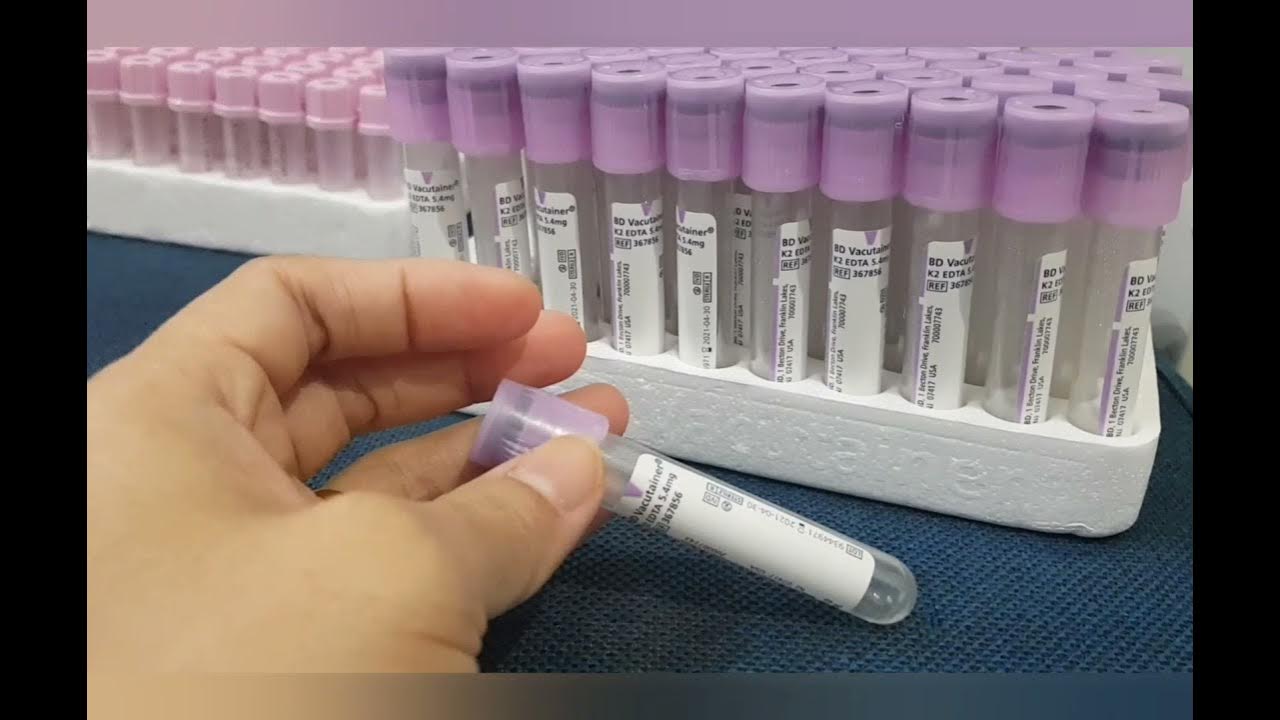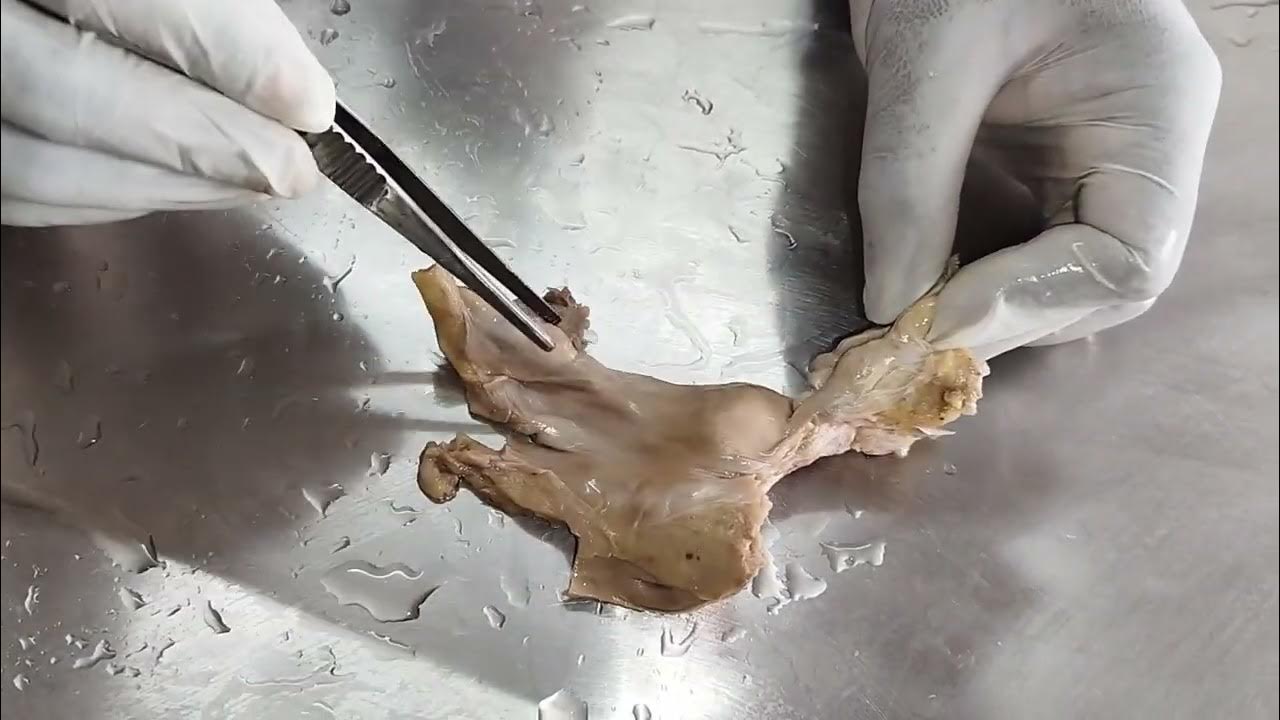Blood bottles guide | UKMLA | CPSA
Summary
TLDRThis educational video offers an overview of common blood collection tubes and their respective tests. Purple tops are for hematology, including full blood counts and HbA1c, while gold tops are for biochemistry tests like liver function and electrolytes. Blue tops assess clotting with coagulation screens, and gray tops are for glucose and lactate tests. Pink tubes are for transfusion lab samples, and blood cultures help isolate organisms for targeted therapy. Arterial blood gas samples provide crucial data for managing acutely ill patients. The video emphasizes the importance of following hospital-specific protocols.
Takeaways
- 🔬 The purple top bottle is used for hematology tests, including full blood count, hemoglobin, platelets, and white cell count, as well as for HbA1c tests in diabetic blood sugar control.
- 🧪 The gold top bottle is designated for a variety of biochemistry tests such as Ura, electrolytes, liver function, C-reactive protein, bone profile, magnesium, lipids, thyroid function, and cardiac enzymes.
- 🩸 The blue bottle is utilized for coagulation tests that assess the clotting system, including Prothrombin time, activated partial thromboplastin time, and fibrinogen, with INR being crucial for monitoring warfarin therapy.
- 💉 The grey top bottle is for specific biochemistry tests like glucose and lactate, the latter of which can be elevated in conditions causing tissue hypoperfusion, such as sepsis or acute ischemia.
- 🏥 The pink bottle is for sending blood samples to the transfusion lab for patients who may need a transfusion, with options for group and save or Cross Match to determine and store the patient's blood group.
- 🏷️ Blood culture bottles are used to send samples to microbiology for culture to isolate organisms, which is essential for targeted antimicrobial therapy and requires an aseptic approach to avoid contamination.
- 🩺 Arterial blood gas samples are taken from the radial artery at the wrist and provide values for pH, P2 (oxygen content), pCO2 (carbon dioxide content), bicarbonate, and base excess, crucial for assessing acutely unwell patients.
- ⏱️ Arterial blood gas samples must be delivered to the lab within about 20 minutes of collection for accurate processing.
- 📋 The video emphasizes that protocols and equipment may vary between different trusts, and healthcare professionals should adhere to specific guidelines provided by their trust.
- 📞 The video encourages viewers to contact hospital labs for advice if needed, highlighting the availability of support from lab professionals.
- 🔄 The script provides generic information about blood bottles and tests, but it reminds viewers that specific practices may differ and to follow local protocols.
Q & A
What is the primary purpose of the video?
-The video is intended to help viewers understand which blood bottles are used for different blood tests, so they can choose the appropriate equipment when working in a hospital setting.
Which blood bottle is used for hematology tests, and what are some examples of these tests?
-The purple top bottle is used for hematology tests, including a full blood count, hemoglobin tests, platelet count, and white cell count, which are important for various medical scenarios such as assessing blood loss, infection, and bleeding risks.
What is the significance of hemoglobin in medical investigations?
-Hemoglobin is an important investigation for numerous scenarios, including blood loss, as it helps in understanding the oxygen-carrying capacity of the blood.
What does the purple top bottle's use extend to besides full blood count?
-Besides full blood count, the purple top bottle is also used for tests like HbA1c, which is crucial for assessing diabetic blood sugar control.
What type of tests are conducted using the gold top bottle?
-The gold top bottle is used for a range of biochemistry tests including Urea and Electrolytes, liver function tests, C-reactive protein, bone profile, magnesium, lipids, thyroid function tests, and cardiac enzymes.
What does the term 'Ura' refer to in the context of the gold top bottle?
-In the context of the gold top bottle, 'Ura' refers to Urea, a measure used for assessing kidney function and detecting electrolyte imbalances.
What is the purpose of the blue bottle in blood testing?
-The blue bottle is used for hematology tests to assess the clotting system, including coagulation screen tests such as Prothrombin time, activated partial thromboplastin time, and fibrinogen.
What is the importance of INR in medical testing?
-INR, or International Normalized Ratio, is important for monitoring Warfarin therapy, a medication used to prevent blood clots, and helps in managing patients with conditions that require careful blood clotting management.
What specific tests are the grey top bottles used for?
-The grey top bottles are used for two specific biochemistry tests: glucose, which can be a fasting or random value, and lactate, which can be raised in conditions causing tissue hypoperfusion, such as sepsis or acute ischemia.
What is the pink bottle used for in terms of blood transfusion?
-The pink bottle is used to send a blood sample to the transfusion lab for patients who may require a blood transfusion, where tests like group and save or Cross Match can be requested to determine and store the patient's blood group and ensure compatibility for transfusion.
Why is it important to label the pink bottle at the patient's bedside?
-Labeling the pink bottle at the patient's bedside after confirming the patient's details ensures the accuracy of the blood sample and helps in swiftly ordering blood if needed for transfusion.
What is the purpose of blood culture bottles in medical testing?
-Blood culture bottles are used to send samples to microbiology for culture to isolate organisms, which enables targeted antimicrobial therapy and helps in diagnosing infections.
How should arterial blood gas samples be handled to ensure accuracy?
-Arterial blood gas samples should be collected in specific syringes and taken to the lab within about 20 minutes of collection to ensure accurate processing and timely assessment of the patient's condition.
What information does an arterial blood gas test provide?
-An arterial blood gas test provides values for pH, oxygen content (P2), carbon dioxide content (PCO2), bicarbonate, and base excess, which are important for assessing the severity of illness, clarifying diagnoses, and guiding management in acutely unwell patients.
Outlines

Esta sección está disponible solo para usuarios con suscripción. Por favor, mejora tu plan para acceder a esta parte.
Mejorar ahoraMindmap

Esta sección está disponible solo para usuarios con suscripción. Por favor, mejora tu plan para acceder a esta parte.
Mejorar ahoraKeywords

Esta sección está disponible solo para usuarios con suscripción. Por favor, mejora tu plan para acceder a esta parte.
Mejorar ahoraHighlights

Esta sección está disponible solo para usuarios con suscripción. Por favor, mejora tu plan para acceder a esta parte.
Mejorar ahoraTranscripts

Esta sección está disponible solo para usuarios con suscripción. Por favor, mejora tu plan para acceder a esta parte.
Mejorar ahora5.0 / 5 (0 votes)






